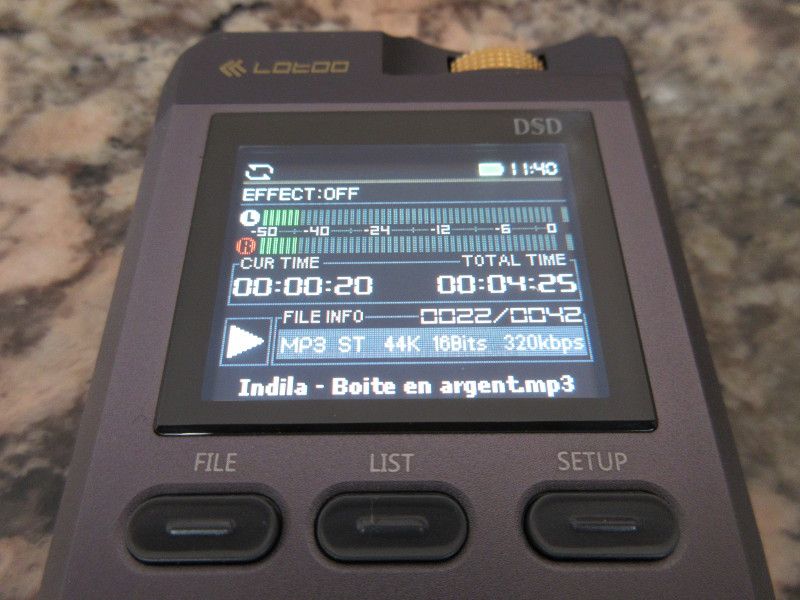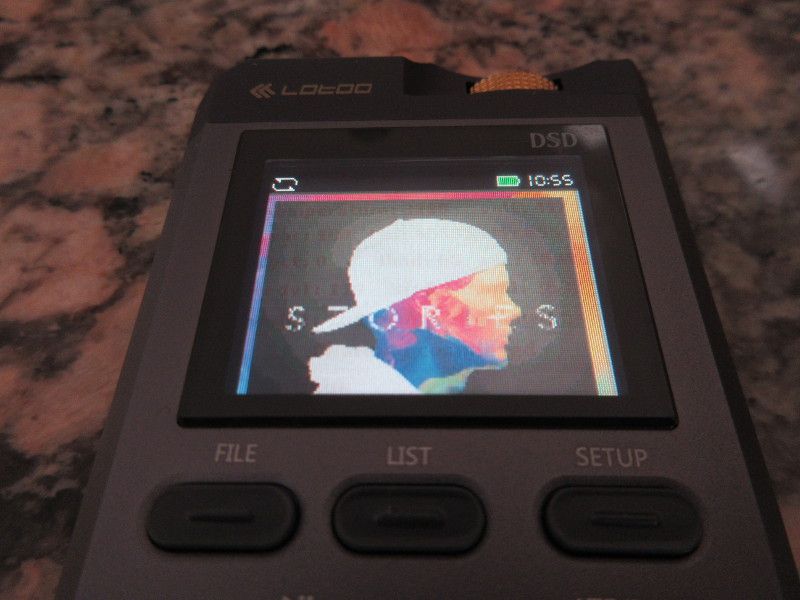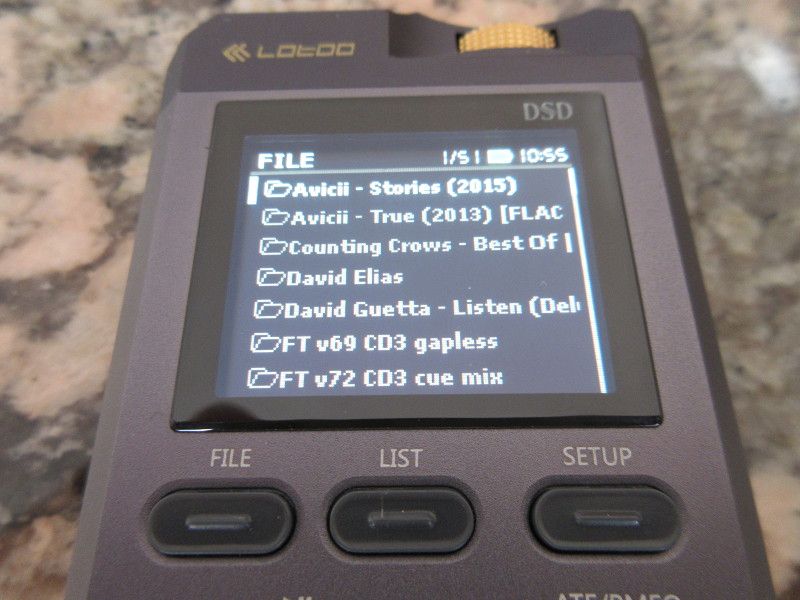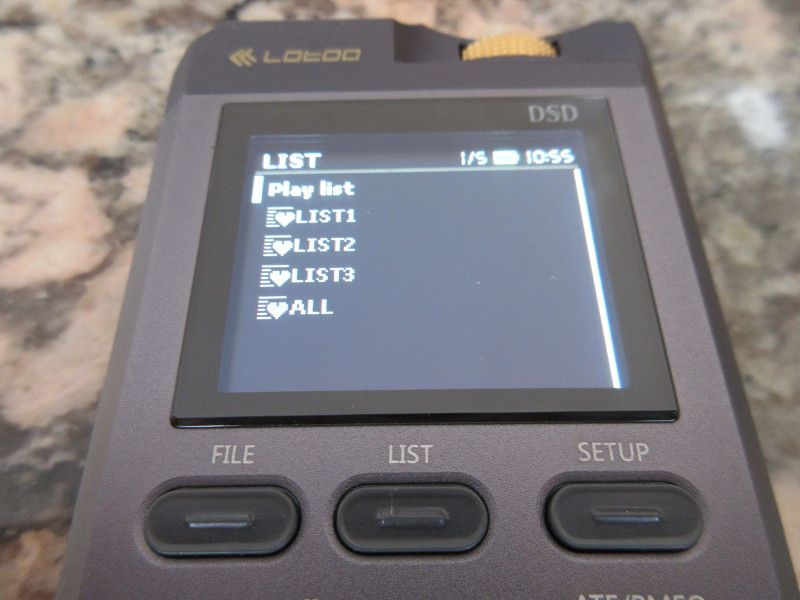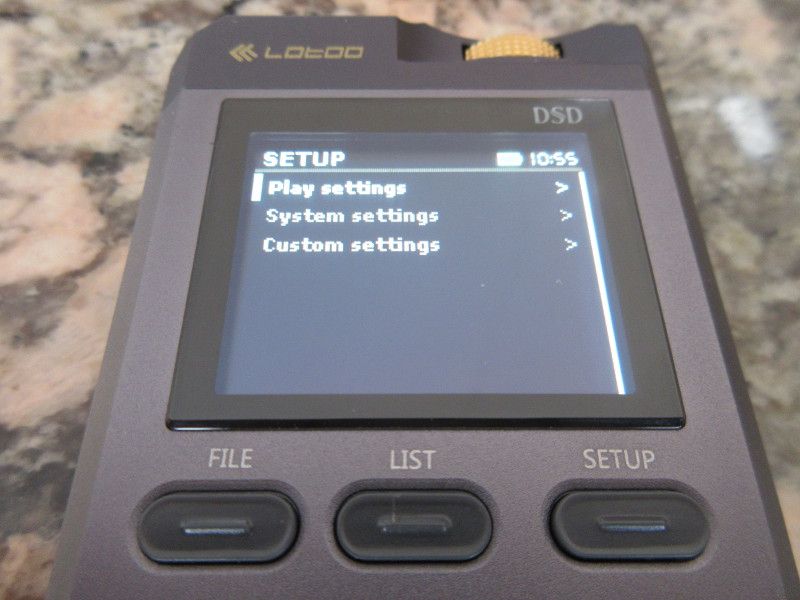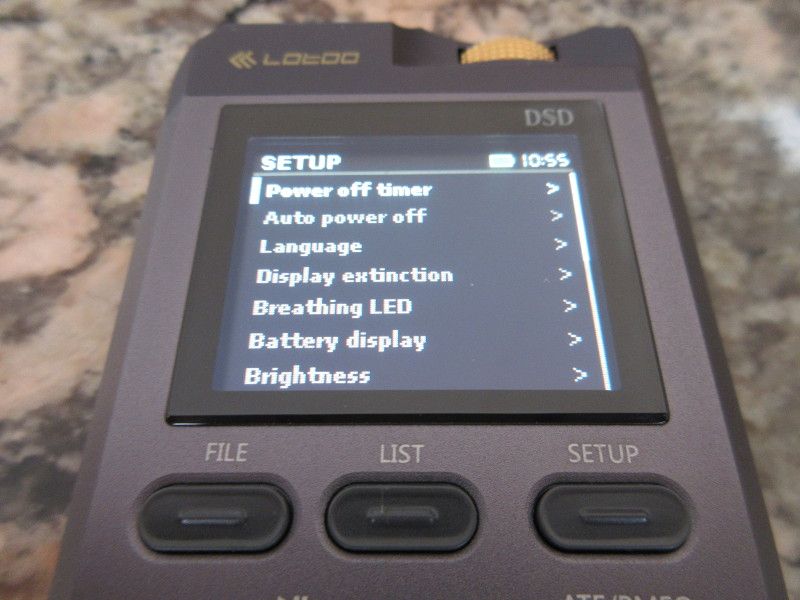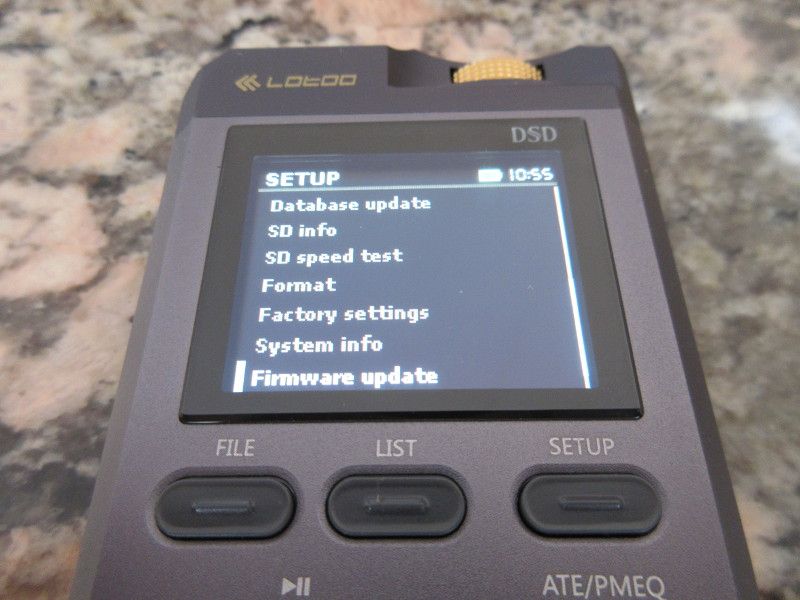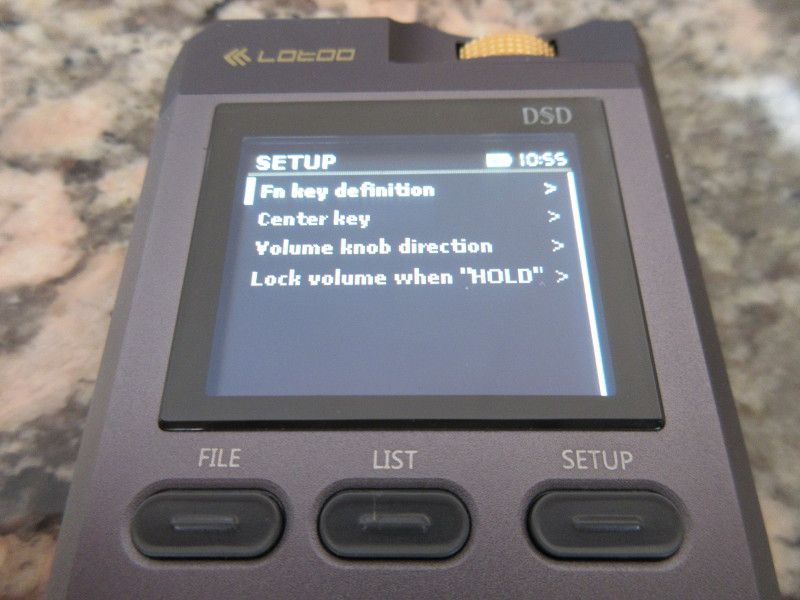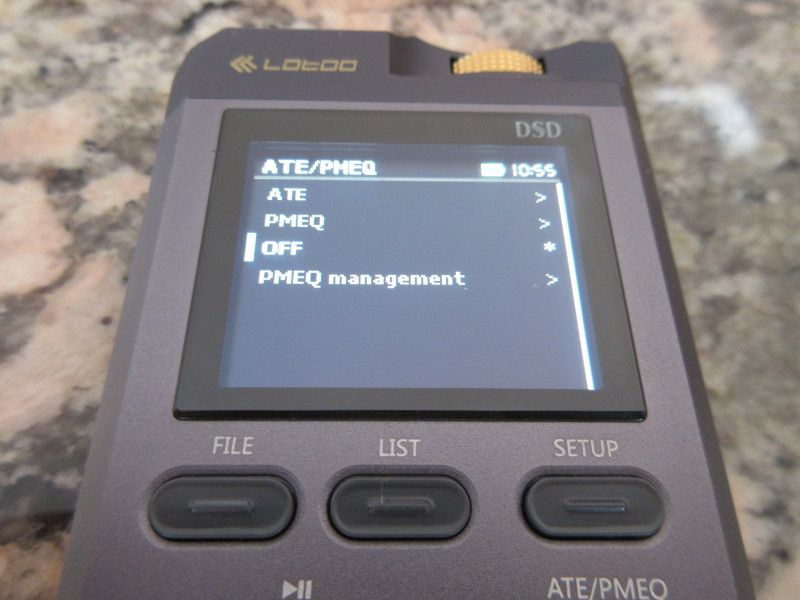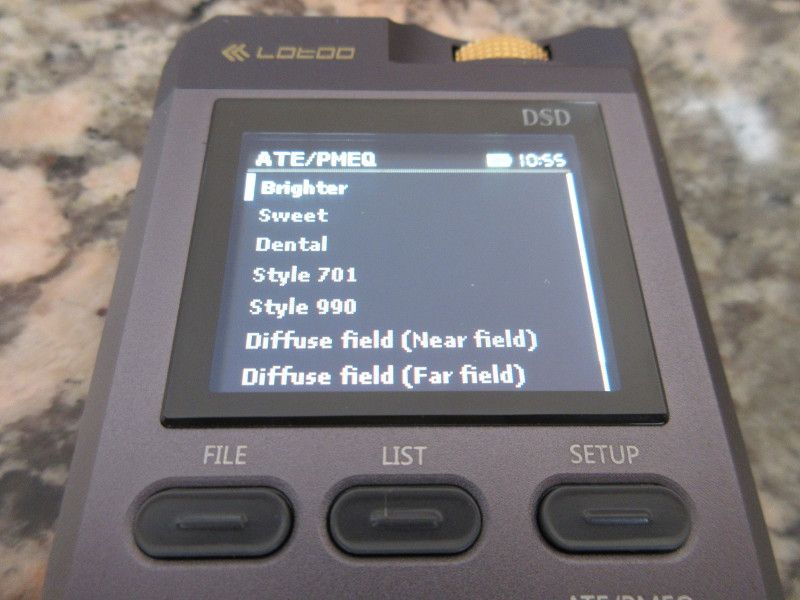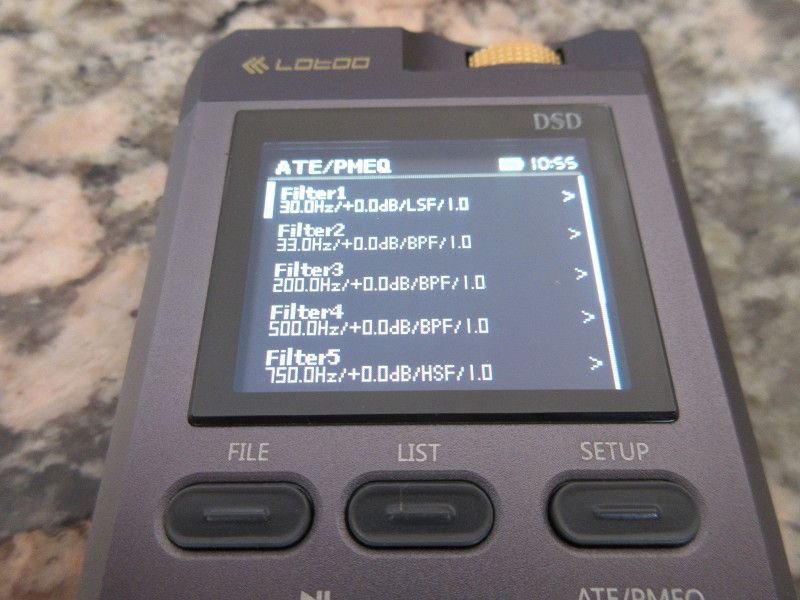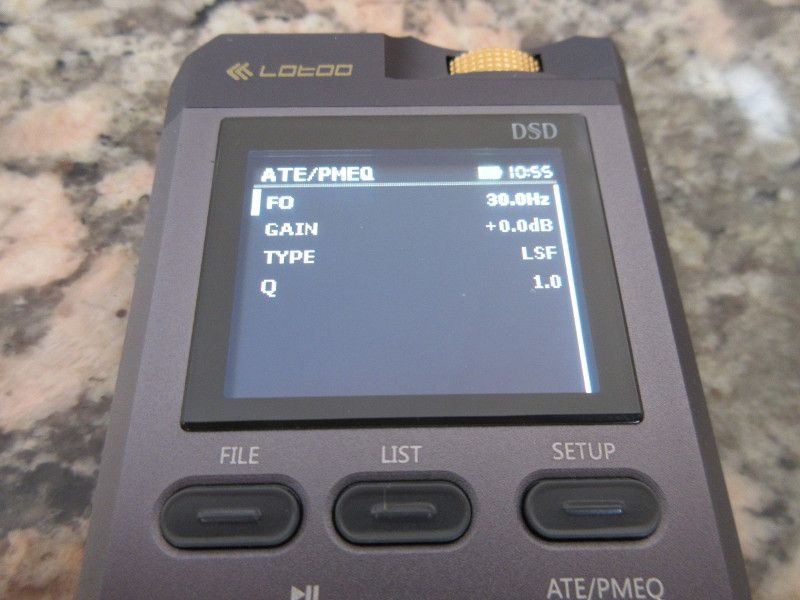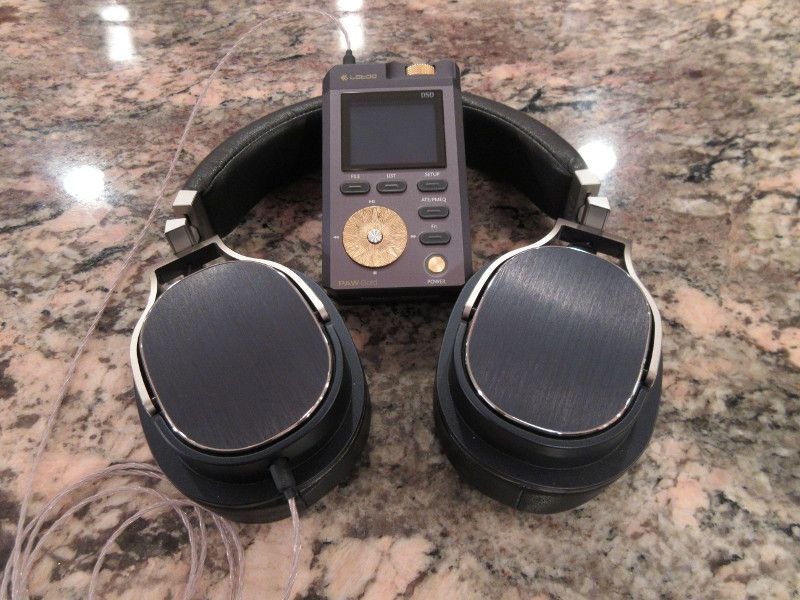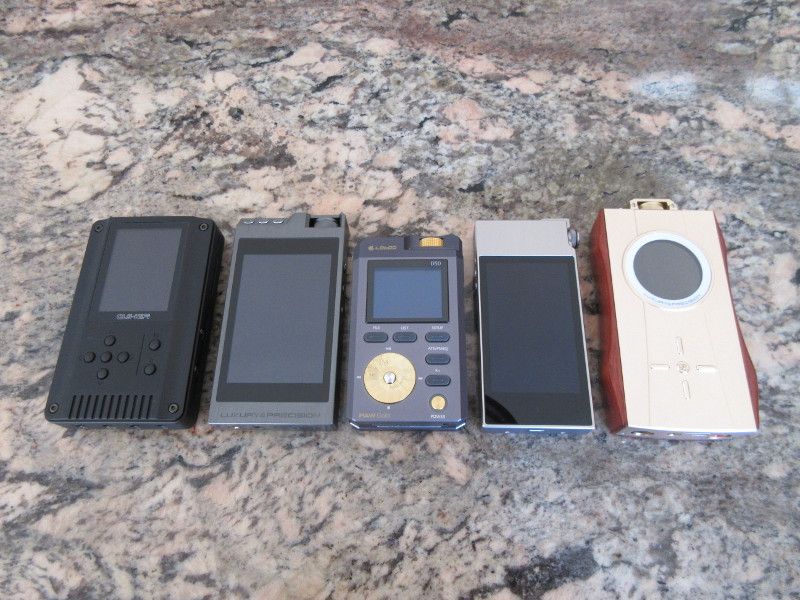This is a Review of Lotoo PAW Gold Reference quality Digital Audio Player (DAP). http://www.lotoo.cn/page/default_en.asp?pageID=97, and also available on Amazon: http://www.amazon.com/dp/B014P7Q8MC/?tag=vectron00-20
In my recent review of Lotoo PAW 5000 (PAW5k), I made quite a few references to its price relative to their flagship Lotoo PAW Gold (LPG). As part of our human nature, we often look at the price trying to justify if it’s worth it. For many, justification is based on the comparison to other products in the same category to see how they stack up against each other. Just like in all of my reviews, I will definitely get to that before I reach my conclusion, but I have to warn you ahead of time with absolutely zero hype – LPG is the most neutral and the most detailed DAP I had a chance to listen to so far. Regardless of how much I enjoy and hold in high regards other DAPs (I have quite a few favorites), to my ears LPG is in a class of its own. Is it worth $2k asking price? I would be able to answer this question if I would have another DAP that cost less and sounds the same. Is it justified to be called “reference” quality? Absolutely, because in my opinion it reached the perfection of neutral sound quality, a benchmark reference for other DAPs comparison. I usually don’t start my review with so many praises, but I decided to go ahead here in order to set a tone for my write up. Now, let’s take a closer look at Lotoo PAW Gold.
Unboxing and Accessories.
When so many budget DAPs get a treatment of a unique premium packaging, where does this leave a real premium DAP? The bar has been raised, and Lotoo answered the "packaging" challenge with a rather original solution. From outside, you have a shiny silver box, very minimalistic in looks and with a basic outline print of LPG. The surprise comes when you unwrap this fortune cookie to discover inside of it a sturdy thick gift box with an "open here" invitation. When you flip open the magnetic thick cardboard cover with a nice soft protection foam lining, you reveal the jewelry of this gift box - LPG inside of a form fitted top tray, shinning with its gold-plated treasure wheel.
At this point, after taking LPG out of the box (its aluminum housing and 280g of heft felt very solid in my hand), I was a bit puzzled what to do next since the box had plenty of height to it and I've only "scratched" the surface when revealed a top shallow tray with LPG. Like a caveman I was shaking it, pulling on the sides, and even tried "open sesame" which didn't help, until I pulled the front of the box out toward me to reveal a three tier box design with two additional trays underneath of the top one. They swung open revealing included accessories and documentation. I was glad I exercised my patience which paid off with a rewarding unboxing experience.
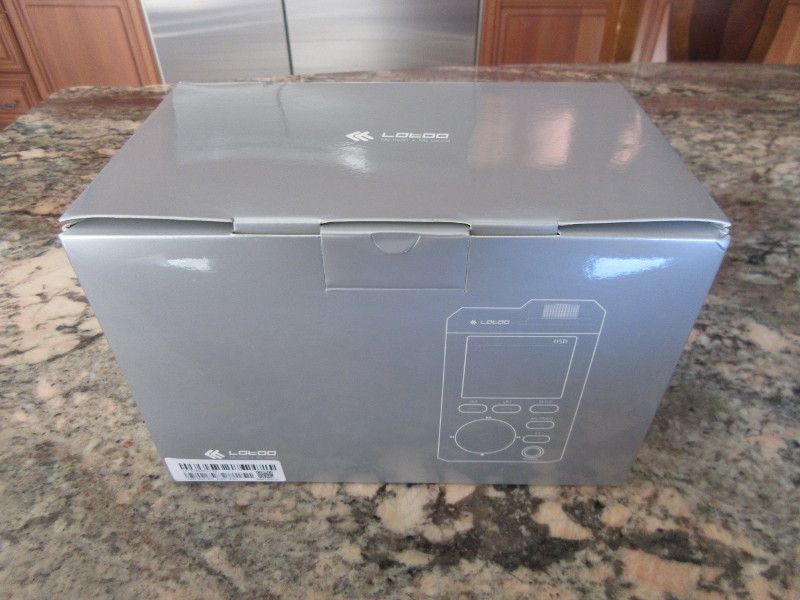
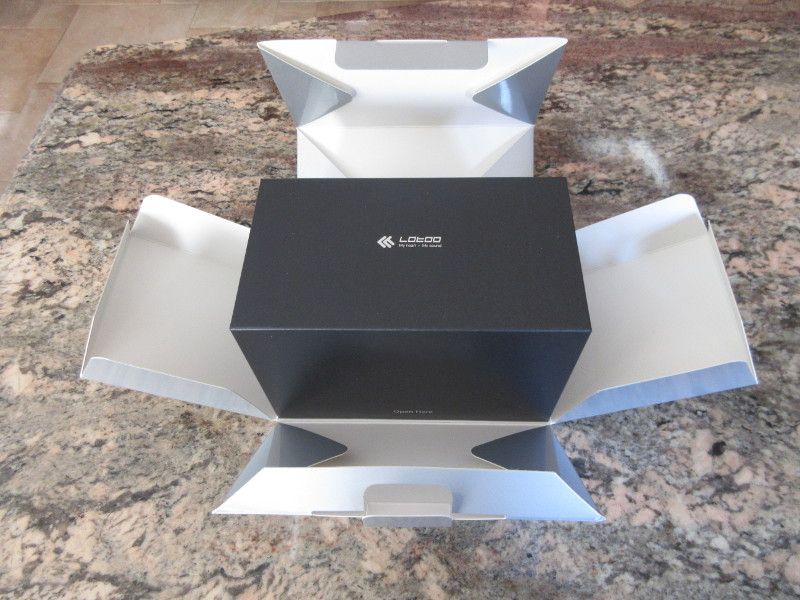
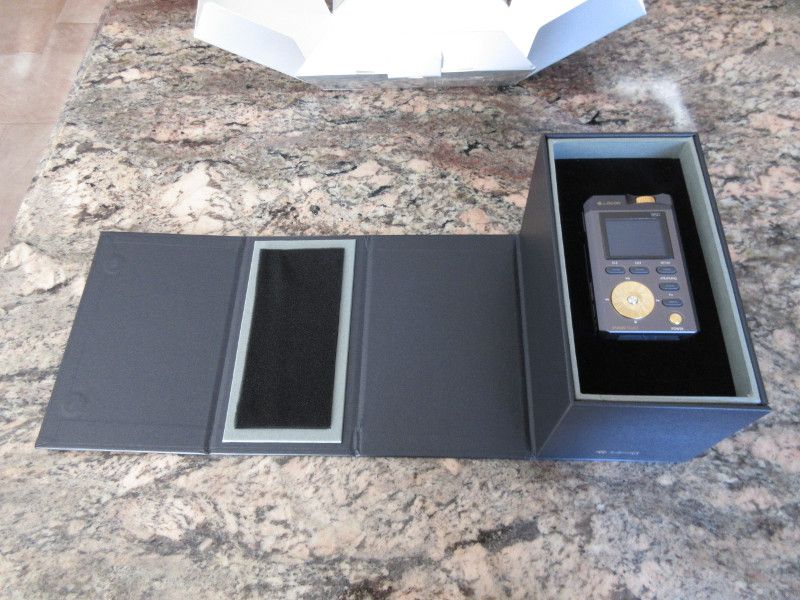
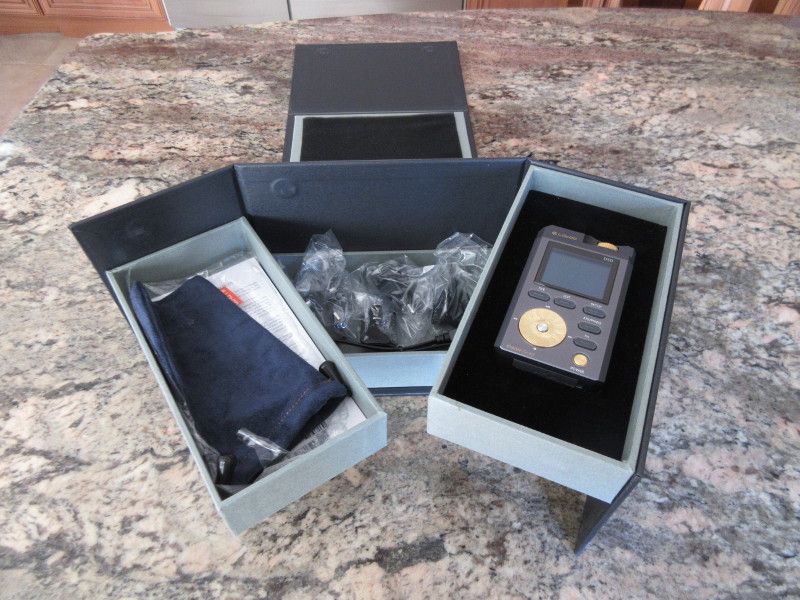
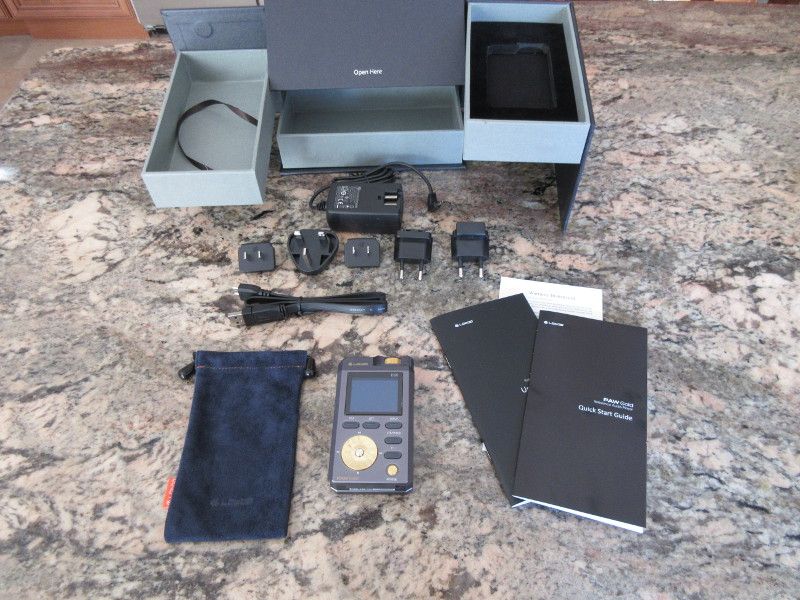
Inside of these trays, I found a high quality flat USB3.0 cable (with an extended micro-usb connector, though LPG is also backward compatible to use a regular 2.0 micro-usb cable), a draw-string felt pouch (nice soft quality), a very detailed quick start and user guide (among the most comprehensive English manuals I've ever seen), and AC adapter with a selection of international power plugs. I was a little disappointed to see a dedicated AC adapter instead of a typical usb connector. LPG design requires 12V/1A charging, and you will need to carry with you a separate AC adapter when away on a trip, though the good news this is not a proprietary charger. It uses a common DC tip, and I would recommend getting a spare charger (from eBay or Amazon) to keep one at home and another one when away. I did confirm that USB3.0 connector is for data transfer only, not charging.
Also I was a bit surprised a screen protector was not included, until I touched the glass of the display to realize how thick and solid it felt, and later learned Lotoo used a hardened sapphire glass! Another comment is about draw string pouch. It's great for scratch protection, but not a substitute for a real case. At the price of LPG, I would have expected Lotoo to provide a form fitted leather case and maybe even a carry case. The design of LPG is not slippery and has fantastic ergonomics to fit comfortably in your hand, not too mention that cold aluminum feels damn good! But I do have some expectations when looking at a premium product and felt that LPG falls a bit short in this regard [of accessories].
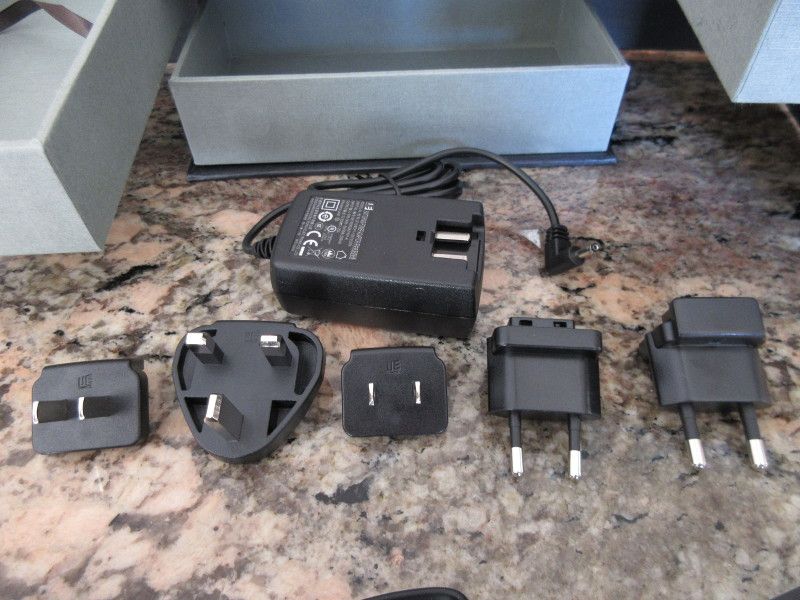
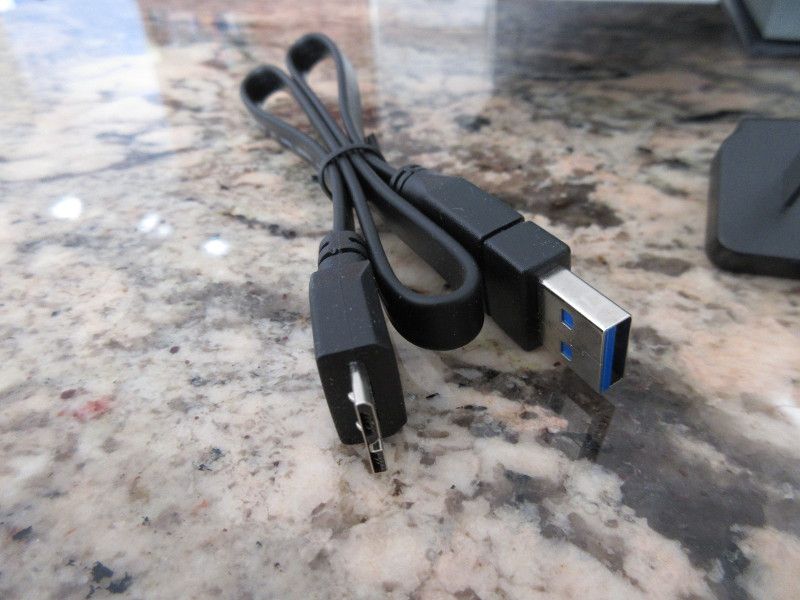
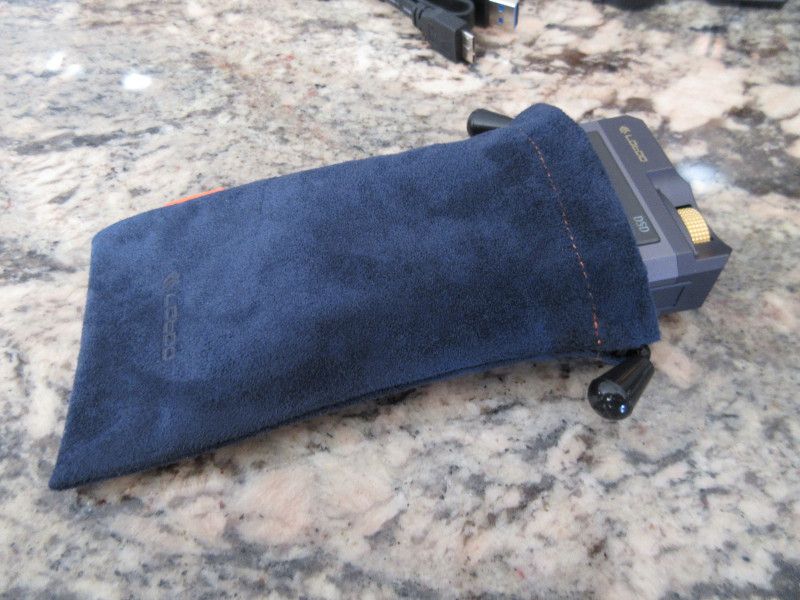
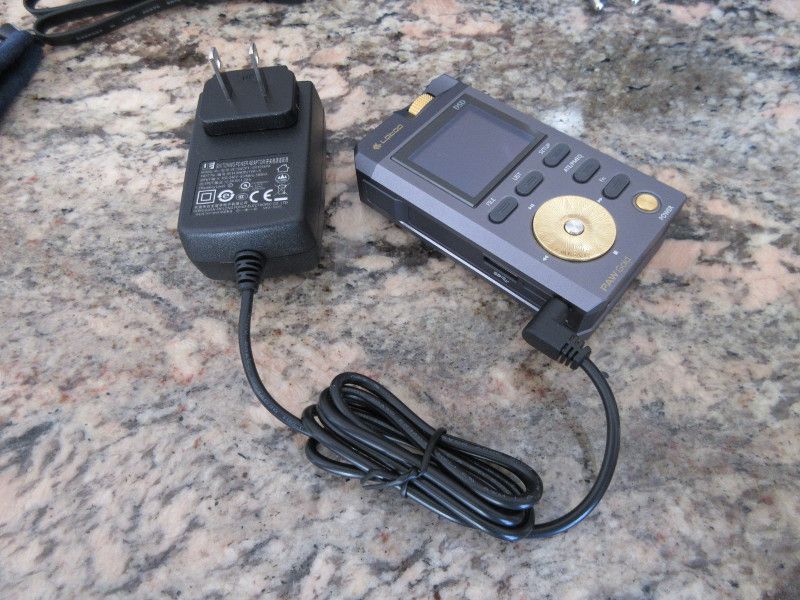
Design.
I already brought up a reference to PAW5k, and want to mention it again in relationship to LPG design. A lot of manufacturers recently introduced a scaled down versions of their popular flagship DAPs, often noticeably smaller in size. When I received PAW5k, I was very surprised by its compact footprint, but didn't expect LPG to be just a little bigger. Measuring 104mm x 60mm x 25.4mm, LPG is a little bit wider and taller (especially due to a volume knob) and about 1/3 thicker, and of course weight difference is noticeable, but overall it felt very similar in my hand, even down to controls layout relative to the display. I actually find this to be very impressive considering LPG has a more advanced amp section with more discrete filtering components, as well as stepping up from uSD to full size SD card support.
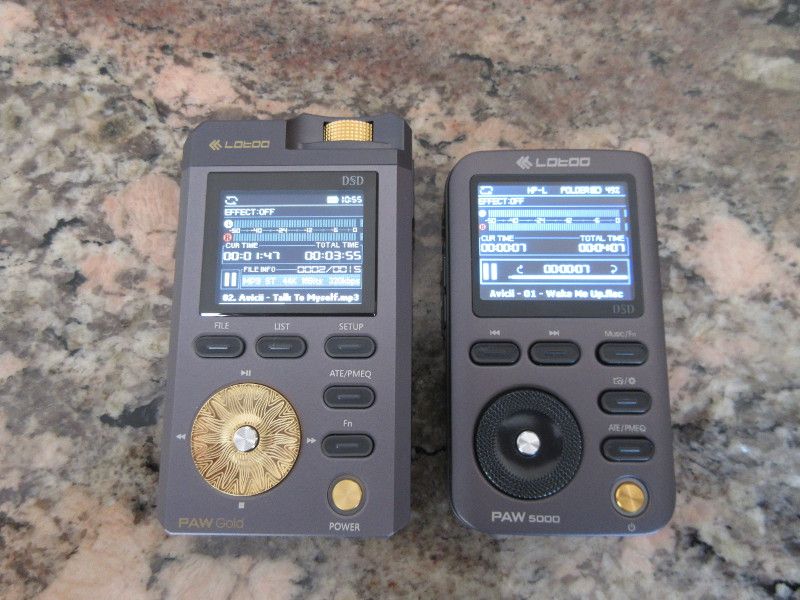
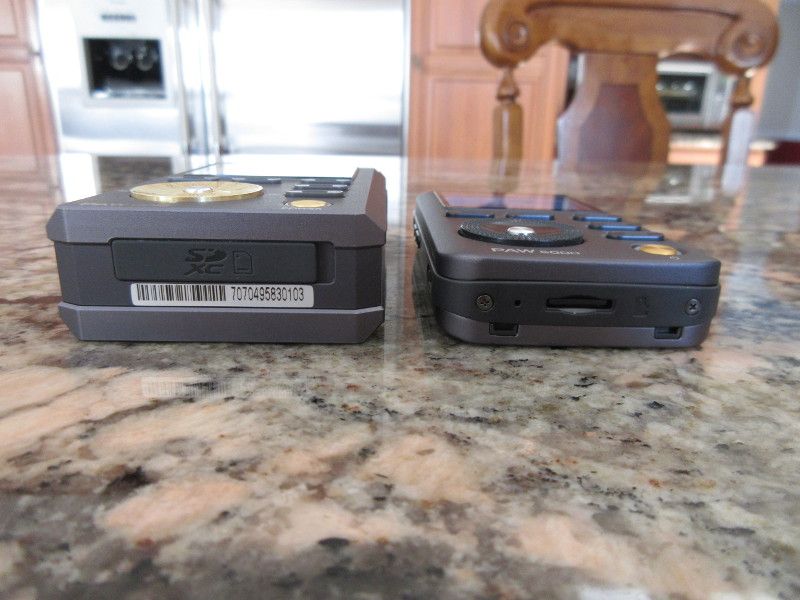
According to Lotoo website, the chassis of LPG is machined from a solid piece of aircraft grade duralumin, which is an alloy of aluminum and copper with magnesium to improve the strength of the metal. You can definitely feel the quality of the material in your hand, no flex what so ever. Non-slippery sandblasted finish with appropriate side grooves also makes a handling of LPG feel secure, though I would still prefer a leather case for an extra enhancement of the grip due to its weight.
The front of the DAP has 1.8" Color OLED display at the top half (under a sapphire glass panel), 5 plastic control buttons (high quality solid material, no rattling, and a nice tactile response), a gold plated power button with optional "glow" light ring around it, and the centerpiece of the front panel - a gold plated D-Pad control with another control button in the center. Unlike PAW5k where the control is a plastic scroll wheel, here it's a directional control pad with Plays/Pause at the top, Stop at the bottom, and Skip Next/Prev and fast forward/back on the right/left. The middle button is Enter/Select key (in the Setup menu) while in the main Playback screen can be customized to function as either Play/Pause or Screen mode switch.
The right side has a reset pinhole at the bottom, the left side has USB3.0 connector for high speed data transfer (not charging), also backward compatible with any regular micro-usb cable. Below that is 12V/1A DC port for a power adapter to charge LPG. At the bottom you will find a full size SD card with a tight plastic dust cover - excellent idea since it allows access to a higher capacity and cheaper full size SD cards. The top of the DAP features a separate Headphone and Line Out ports, and from what I gathered there is no SPDIF or optical outputs. Coincidentally, due to a lower quality DAC/amp section, PAW5k offers both SPDIF and optical output for a connection to an external DAC/amp. With LPG, Lotoo had enough confidence to omit that.
Above HO and LO, you can find a Gain (high/low) switch and a hold (to prevent accidental button push) switch. Switches itself are not easy to slide which is good to prevent an accidental gain change, but also when headphone jack is in - it makes access to a gain switch a bit harder due to a close proximity to the headphone port. It wasn't a show stopper for me because I kept it permanently in low gain even with my most demanding headphones - LPG got a lot of power. Analog Volume knob is gold platted and protected from the left/right/top sides, leaving it only exposed on the front and the back for a quick access to adjust volume with a thumb only (or index finger from the back). Volume knob has an acceptable resistance, not too loose or too tight, and you can feel adjustment with a very subtle click as you turn it. Also, as part of a custom configuration, you can change volume adjustment to be either clockwise or counter-clockwise. I ended up selecting a volume knob adjustment direction to align visually with a horizontal on-screen adjustment - counter-clockwise to increase the volume.
Overall, the design is a bit minimalistic but also straight forward and efficient for one handed operation. I don't have big hands, thus the ergonomics of using a DAP by only moving my thumb without readjusting the hand is very important to me. The layout of controls is efficient and works perfectly for either left or right hand operation where my thumb can easily reach D-pad control and other buttons surrounding it, while my index finger has a clear access to volume knob from the back. I'm sure a lot of people might have a question which control is better, the wheel of PAW5k or the D-pad of LPG? It might come as a surprise, but I actually found D-pad to give me a better control of using just a thumb without moving to other buttons. LPG D-pad has a nice tactile response with a good feedback and a large round surface for a thumb to comfortably glide around. One thing to keep in mind, if you are dealing with a big list of songs or folders, scrolling wheel has an advantage. I personally don't have a large organized library of songs, thus usually deal with a smaller list of test tracks partitioned in directories.
At the same time, 280g of weight packed in a small brick is not going to be exactly pocket friendly for everybody. YMMV, but I would probably prefer to use it at home or in the office at work rather than carrying it with me in the pocket while walking or using public transportation or while exercising (though you can exercise with it as an add-on weight ). Don't get me wrong, despite its extra weight - LPG compact size is very easy to grip. Also, you can probably get one of these compact camera cases you clip on your belt if you choose to carry it with you on the go.
). Don't get me wrong, despite its extra weight - LPG compact size is very easy to grip. Also, you can probably get one of these compact camera cases you clip on your belt if you choose to carry it with you on the go.
The only gripe I have is the same one as with PAW5k, where with a screen off there is no way to control playback until you turn the screen back on. Actually, with PAW5k you are able to skip tracks by holding down volume up/down buttons, but play/pause wasn't available either. Here, LPG has no way to skip or play/pause when screen is off. To preserve a battery life, even considering a phenomenal 11+ hrs of endurance I was getting with such a powerful DAP, you still want to keep your screen off. Volume control is already easily accessible, but in order to Skip to the next/prev track or simply to pause playback you have to turn the unit on first (power button is also screen on/off with a short press) and then proceed to playback control. If there is a concern about pressing buttons accidentally while in your pocket, you already have Hold button to prevent this. I really hope that Lotoo in their future fw updates will consider allowing the use of D-pad or maybe combination of other buttons to enable playback control with a screen off.
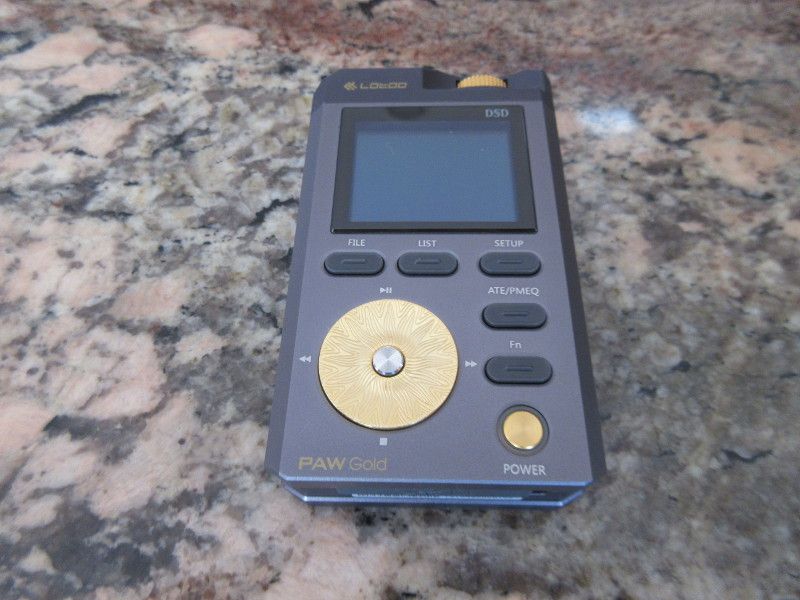

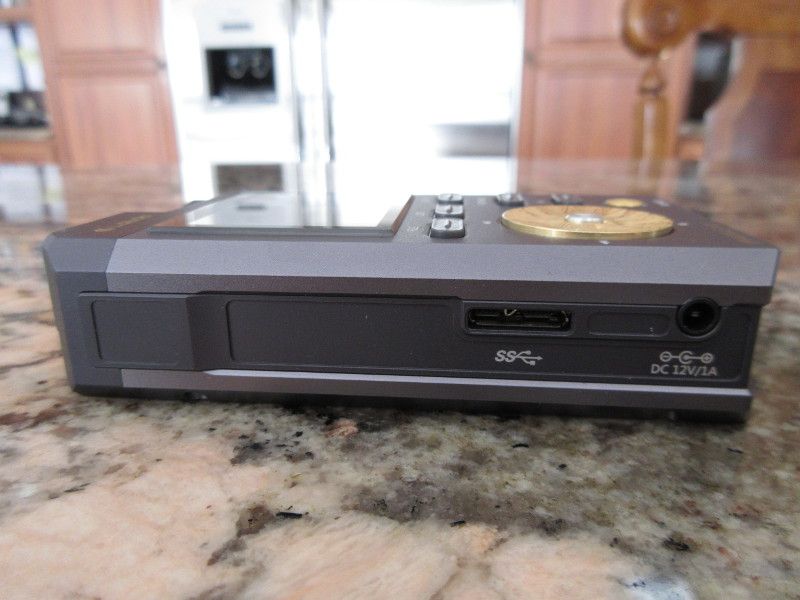
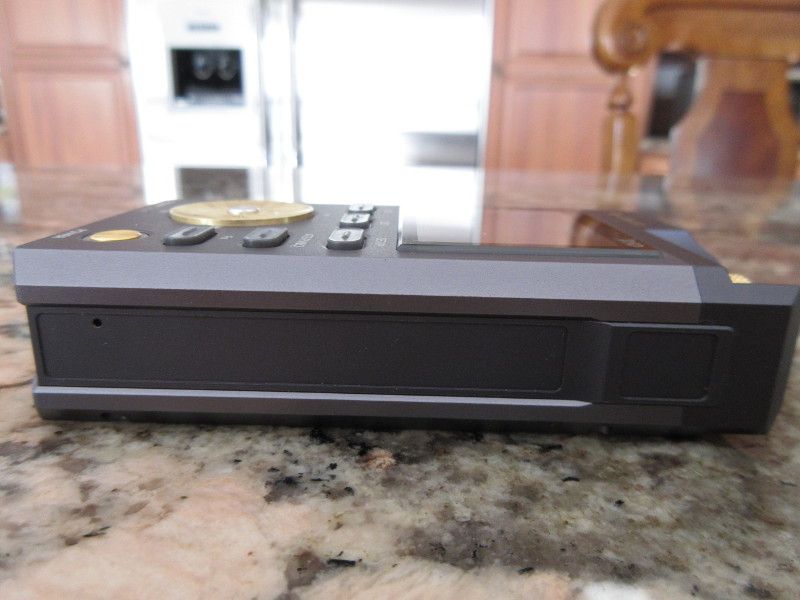

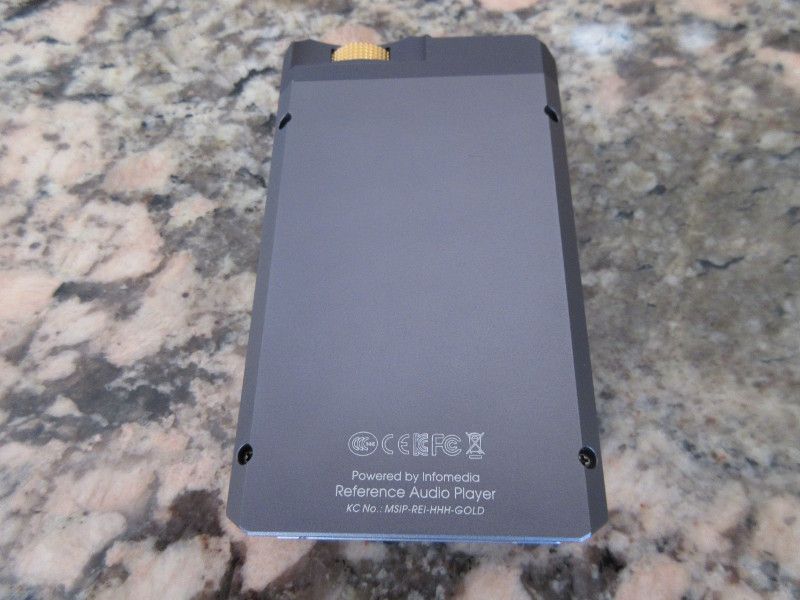
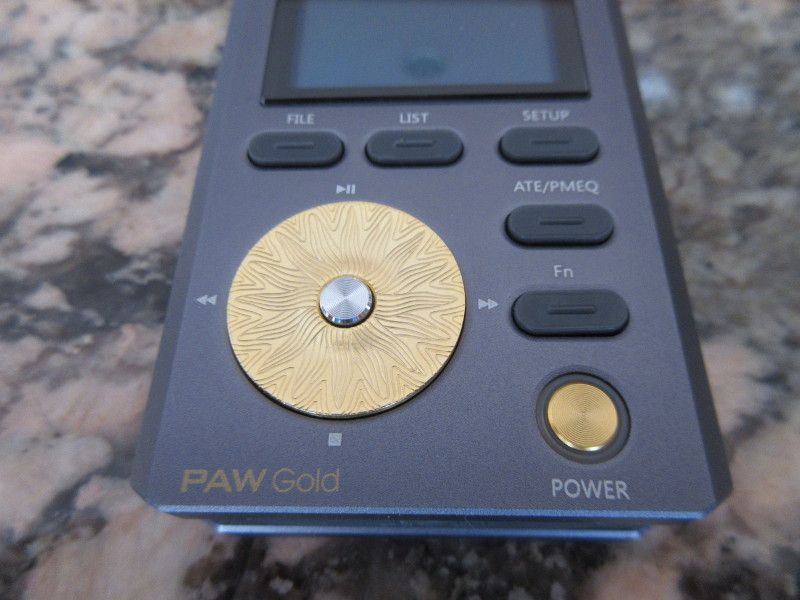
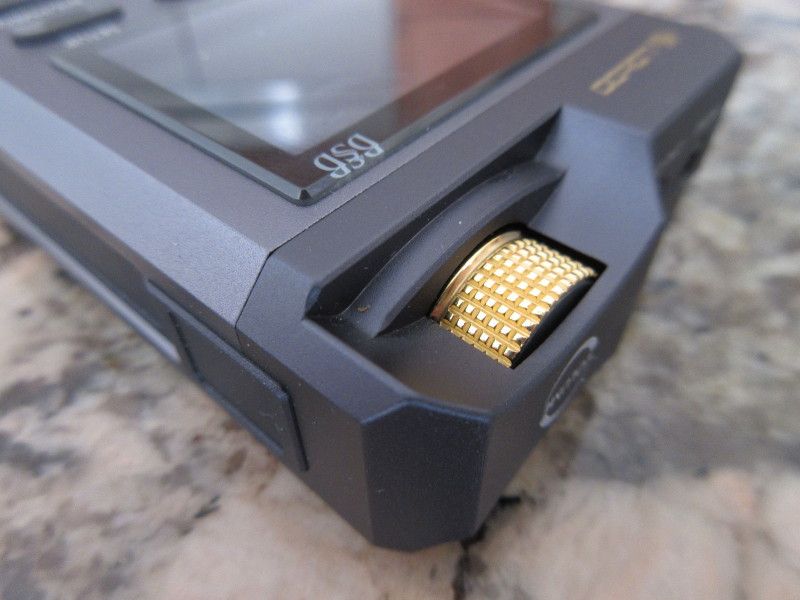
In my recent review of Lotoo PAW 5000 (PAW5k), I made quite a few references to its price relative to their flagship Lotoo PAW Gold (LPG). As part of our human nature, we often look at the price trying to justify if it’s worth it. For many, justification is based on the comparison to other products in the same category to see how they stack up against each other. Just like in all of my reviews, I will definitely get to that before I reach my conclusion, but I have to warn you ahead of time with absolutely zero hype – LPG is the most neutral and the most detailed DAP I had a chance to listen to so far. Regardless of how much I enjoy and hold in high regards other DAPs (I have quite a few favorites), to my ears LPG is in a class of its own. Is it worth $2k asking price? I would be able to answer this question if I would have another DAP that cost less and sounds the same. Is it justified to be called “reference” quality? Absolutely, because in my opinion it reached the perfection of neutral sound quality, a benchmark reference for other DAPs comparison. I usually don’t start my review with so many praises, but I decided to go ahead here in order to set a tone for my write up. Now, let’s take a closer look at Lotoo PAW Gold.
Unboxing and Accessories.
When so many budget DAPs get a treatment of a unique premium packaging, where does this leave a real premium DAP? The bar has been raised, and Lotoo answered the "packaging" challenge with a rather original solution. From outside, you have a shiny silver box, very minimalistic in looks and with a basic outline print of LPG. The surprise comes when you unwrap this fortune cookie to discover inside of it a sturdy thick gift box with an "open here" invitation. When you flip open the magnetic thick cardboard cover with a nice soft protection foam lining, you reveal the jewelry of this gift box - LPG inside of a form fitted top tray, shinning with its gold-plated treasure wheel.
At this point, after taking LPG out of the box (its aluminum housing and 280g of heft felt very solid in my hand), I was a bit puzzled what to do next since the box had plenty of height to it and I've only "scratched" the surface when revealed a top shallow tray with LPG. Like a caveman I was shaking it, pulling on the sides, and even tried "open sesame" which didn't help, until I pulled the front of the box out toward me to reveal a three tier box design with two additional trays underneath of the top one. They swung open revealing included accessories and documentation. I was glad I exercised my patience which paid off with a rewarding unboxing experience.





Inside of these trays, I found a high quality flat USB3.0 cable (with an extended micro-usb connector, though LPG is also backward compatible to use a regular 2.0 micro-usb cable), a draw-string felt pouch (nice soft quality), a very detailed quick start and user guide (among the most comprehensive English manuals I've ever seen), and AC adapter with a selection of international power plugs. I was a little disappointed to see a dedicated AC adapter instead of a typical usb connector. LPG design requires 12V/1A charging, and you will need to carry with you a separate AC adapter when away on a trip, though the good news this is not a proprietary charger. It uses a common DC tip, and I would recommend getting a spare charger (from eBay or Amazon) to keep one at home and another one when away. I did confirm that USB3.0 connector is for data transfer only, not charging.
Also I was a bit surprised a screen protector was not included, until I touched the glass of the display to realize how thick and solid it felt, and later learned Lotoo used a hardened sapphire glass! Another comment is about draw string pouch. It's great for scratch protection, but not a substitute for a real case. At the price of LPG, I would have expected Lotoo to provide a form fitted leather case and maybe even a carry case. The design of LPG is not slippery and has fantastic ergonomics to fit comfortably in your hand, not too mention that cold aluminum feels damn good! But I do have some expectations when looking at a premium product and felt that LPG falls a bit short in this regard [of accessories].




Design.
I already brought up a reference to PAW5k, and want to mention it again in relationship to LPG design. A lot of manufacturers recently introduced a scaled down versions of their popular flagship DAPs, often noticeably smaller in size. When I received PAW5k, I was very surprised by its compact footprint, but didn't expect LPG to be just a little bigger. Measuring 104mm x 60mm x 25.4mm, LPG is a little bit wider and taller (especially due to a volume knob) and about 1/3 thicker, and of course weight difference is noticeable, but overall it felt very similar in my hand, even down to controls layout relative to the display. I actually find this to be very impressive considering LPG has a more advanced amp section with more discrete filtering components, as well as stepping up from uSD to full size SD card support.


According to Lotoo website, the chassis of LPG is machined from a solid piece of aircraft grade duralumin, which is an alloy of aluminum and copper with magnesium to improve the strength of the metal. You can definitely feel the quality of the material in your hand, no flex what so ever. Non-slippery sandblasted finish with appropriate side grooves also makes a handling of LPG feel secure, though I would still prefer a leather case for an extra enhancement of the grip due to its weight.
The front of the DAP has 1.8" Color OLED display at the top half (under a sapphire glass panel), 5 plastic control buttons (high quality solid material, no rattling, and a nice tactile response), a gold plated power button with optional "glow" light ring around it, and the centerpiece of the front panel - a gold plated D-Pad control with another control button in the center. Unlike PAW5k where the control is a plastic scroll wheel, here it's a directional control pad with Plays/Pause at the top, Stop at the bottom, and Skip Next/Prev and fast forward/back on the right/left. The middle button is Enter/Select key (in the Setup menu) while in the main Playback screen can be customized to function as either Play/Pause or Screen mode switch.
The right side has a reset pinhole at the bottom, the left side has USB3.0 connector for high speed data transfer (not charging), also backward compatible with any regular micro-usb cable. Below that is 12V/1A DC port for a power adapter to charge LPG. At the bottom you will find a full size SD card with a tight plastic dust cover - excellent idea since it allows access to a higher capacity and cheaper full size SD cards. The top of the DAP features a separate Headphone and Line Out ports, and from what I gathered there is no SPDIF or optical outputs. Coincidentally, due to a lower quality DAC/amp section, PAW5k offers both SPDIF and optical output for a connection to an external DAC/amp. With LPG, Lotoo had enough confidence to omit that.
Above HO and LO, you can find a Gain (high/low) switch and a hold (to prevent accidental button push) switch. Switches itself are not easy to slide which is good to prevent an accidental gain change, but also when headphone jack is in - it makes access to a gain switch a bit harder due to a close proximity to the headphone port. It wasn't a show stopper for me because I kept it permanently in low gain even with my most demanding headphones - LPG got a lot of power. Analog Volume knob is gold platted and protected from the left/right/top sides, leaving it only exposed on the front and the back for a quick access to adjust volume with a thumb only (or index finger from the back). Volume knob has an acceptable resistance, not too loose or too tight, and you can feel adjustment with a very subtle click as you turn it. Also, as part of a custom configuration, you can change volume adjustment to be either clockwise or counter-clockwise. I ended up selecting a volume knob adjustment direction to align visually with a horizontal on-screen adjustment - counter-clockwise to increase the volume.
Overall, the design is a bit minimalistic but also straight forward and efficient for one handed operation. I don't have big hands, thus the ergonomics of using a DAP by only moving my thumb without readjusting the hand is very important to me. The layout of controls is efficient and works perfectly for either left or right hand operation where my thumb can easily reach D-pad control and other buttons surrounding it, while my index finger has a clear access to volume knob from the back. I'm sure a lot of people might have a question which control is better, the wheel of PAW5k or the D-pad of LPG? It might come as a surprise, but I actually found D-pad to give me a better control of using just a thumb without moving to other buttons. LPG D-pad has a nice tactile response with a good feedback and a large round surface for a thumb to comfortably glide around. One thing to keep in mind, if you are dealing with a big list of songs or folders, scrolling wheel has an advantage. I personally don't have a large organized library of songs, thus usually deal with a smaller list of test tracks partitioned in directories.
At the same time, 280g of weight packed in a small brick is not going to be exactly pocket friendly for everybody. YMMV, but I would probably prefer to use it at home or in the office at work rather than carrying it with me in the pocket while walking or using public transportation or while exercising (though you can exercise with it as an add-on weight
 ). Don't get me wrong, despite its extra weight - LPG compact size is very easy to grip. Also, you can probably get one of these compact camera cases you clip on your belt if you choose to carry it with you on the go.
). Don't get me wrong, despite its extra weight - LPG compact size is very easy to grip. Also, you can probably get one of these compact camera cases you clip on your belt if you choose to carry it with you on the go.The only gripe I have is the same one as with PAW5k, where with a screen off there is no way to control playback until you turn the screen back on. Actually, with PAW5k you are able to skip tracks by holding down volume up/down buttons, but play/pause wasn't available either. Here, LPG has no way to skip or play/pause when screen is off. To preserve a battery life, even considering a phenomenal 11+ hrs of endurance I was getting with such a powerful DAP, you still want to keep your screen off. Volume control is already easily accessible, but in order to Skip to the next/prev track or simply to pause playback you have to turn the unit on first (power button is also screen on/off with a short press) and then proceed to playback control. If there is a concern about pressing buttons accidentally while in your pocket, you already have Hold button to prevent this. I really hope that Lotoo in their future fw updates will consider allowing the use of D-pad or maybe combination of other buttons to enable playback control with a screen off.









